The Namib is one of the oldest and driest deserts in the world. The western edge of the southern Namib, stretching down to the Orange river, is a sea of sand that is 300kms long, 150km-wide and includes some of the highest and most picturesque dunes in the world. These dunes are characterized by their vivid colors ranging from yellow to pink to orange and red, a consequence of oxidation of iron present in the sand. The older the dune, the more intense the reddish color.
These mighty dunes are interspersed with ephemeral pans of which Soussusvlei is the best known and one of the most visited attractions
. The gates to the to Namib-Naukluft Park (of which Soussusvlei is a part) at Sesriem opens at dawn to allow early access to the dunes. From Sesriem, it is a 65 km paved road to get to the main car park inside and another 4 km of sand track to get to the dunes. So if you actually want to watch the sun rise from the tops of the red dunes, you have to camp inside the park. Since we were camped closer to Solitaire, about 60 km from Sesriem, the best we could hope for was to enter the park as soon as the gates opened at sunrise. A pre-dawn departure and driving in darkness for an hour got us to Sesriem in time to be the first in line to enter the park!
Driving through the park during the golden hour was quite magical. The air was crisp, the short, dry grass glowed golden and the colors of the dunes were at their best. Springbok were grazing alongside the road and we could see ostriches feeding at a distance. Framed by a massive red dune, an adult Oryx just stood still as if it was specially posing for us
. A hot air balloon was hovering high in the sky, taking in the early morning panorama.
The most accessible of the red dunes along the Sossusvlei road is the 150meter Dune 45, so called because it is 45kms from the park entrance. It is a popular sunrise and bush breakfast venue and also one of the few that you are allowed to climb inside the park. A few kilometers beyond it, the road climbs to a promontory and affords a nice vantage point to survey the area.
After parking our car at the main car park, we boarded a 4WD park shuttle for the final 4-km stretch with a thick layer of sand that demanded expert skills from the driver. A few private vehicles were trying to make it on their own and were clearly being challenged. When passing a vehicle seemingly stuck in the sand, the driver of the park shuttle would offer to help them out, but such offers were often not received very well. It seems drivers all over the world seem to have trouble asking for help, until they are well and truly stuck, that is
.
Video : 4WD stuck in the sand
After about 20 minutes of being thrown in every which direction, we arrived at Dead Vlei, an ephemeral salt pan that is home to acacia trees that have been dead for more than nine hundred years! The pan was formed when the nearby Tsauchab River flooded. Acacia and camel thorn trees grew and flourished in the pools. Around nine hundred years ago, the climate changed and the area was hit by drought. The sand dunes encroached around the pan, effectively cutting off the trees from the river. Over the centuries the sun scorched the trees rendering them black. In the dry desert air the trees did not decompose but are completely desiccated.
Dead Vlei pan is surrounded by high dunes, the highest of which is nicknamed Big Mama. From the top of any of the surrounding dunes, one can get a wonderful panoramic view of the pan. Descending to the floor and making one's way through the twisted and contorted branches of these ancient trees, we were able to truly appreciate the size of these massive dunes
.
Water is scarce but life still manages to find a way in and around the pan. The plants and animals manage to cling on to their precarious existence thanks to a morning mist which sweeps from the coast of the Atlantic ocean. Also bits of plant and animal detritus collect in the pan and provide a food source for the dune dwellers. You only have to look beyond the well-trodden path of fellow visitors to see evidence of this. Tiny insects and beetles leave fascinating tracery designs in the sand. Dune geckos scamper between tufts of grass looking for insects. The heavier Oryx and Ostrich leave a deeper imprint near the base of the dunes.
Leaving Dead Vlei, we proceeded to the Soussusvlei area, the most accessible part of the sand sea . Even higher sand dunes surround an equally vivid white salt and clay pan here, creating a fascinating landscape. The Sossusvlei pan lies at the foot of the highest dune in the area, the 325 meters dune nicknamed Big Daddy
. Also a creation of the Tsauchab River, the pan rarely holds water, but as recently as 1997 and again in 2001, the river gathered enough volume and momentum to push through into the pan thereby transforming it into a verdant oasis. A walk around the floor of the pan revealed the presence of a family of Ostrich that fled immediately but a lone Oryx that was taking shelter under a tree decided that the heat was a bigger threat.
Video :Big Daddy and Big Mamma dunes
Our final stop for the afternoon as at Sesriem Canyon that lies within a couple of kilometers outside the park gate. The canyon derives its name from the fact that early Afrikaner trekkers had to use six ('ses') leather thongs ('riem') so that their buckets could reach the water far below. The canyon is almost invisible until you get to the lip of the deep cleft. A trail descends into it and we hiked for a short distance admiring the rock formations and peering into caves on the way before deciding to head back to our home-away-from-home at Camp Agama.
Flaming Dunes of the Namib Desert
Monday, February 18, 2013
 Sossusvlei, Namib-Naukluft Park, Namibia
Sossusvlei, Namib-Naukluft Park, Namibia
Other Entries
-
143The largest water curtain in the world, I presume?
Jan 2821 days prior Livingstone, Zambiaphoto_camera15videocam 0comment 1
Livingstone, Zambiaphoto_camera15videocam 0comment 1 -
144Same Falls, Different View
Jan 2920 days prior Victoria Falls, Zimbabwephoto_camera22videocam 0comment 1
Victoria Falls, Zimbabwephoto_camera22videocam 0comment 1 -
145A Day at Chobe National Park
Jan 3019 days prior Chobe National Park, Botswanaphoto_camera52videocam 0comment 2
Chobe National Park, Botswanaphoto_camera52videocam 0comment 2 -
146Zambezi River Cruise
Jan 3118 days prior Victoria Falls, Zimbabwephoto_camera11videocam 0comment 0
Victoria Falls, Zimbabwephoto_camera11videocam 0comment 0 -
147Bulawayo
Feb 0117 days prior Bulawayo, Zimbabwephoto_camera9videocam 0comment 2
Bulawayo, Zimbabwephoto_camera9videocam 0comment 2 -
148180 Degree Turn
Feb 0315 days prior Maun, Botswanaphoto_camera7videocam 0comment 1
Maun, Botswanaphoto_camera7videocam 0comment 1 -
149Where A River Vanishes In The Kalahari
Feb 0513 days prior Okavango Delta, Botswanaphoto_camera28videocam 0comment 7
Okavango Delta, Botswanaphoto_camera28videocam 0comment 7 -
150To Windhoek - By Hook Or Crook
Feb 0711 days prior Windhoek, Namibiaphoto_camera3videocam 0comment 1
Windhoek, Namibiaphoto_camera3videocam 0comment 1 -
151Windhoek
Feb 0810 days prior Windhoek, Namibiaphoto_camera11videocam 0comment 2
Windhoek, Namibiaphoto_camera11videocam 0comment 2 -
152Dogs Save Cheetahs!
Feb 099 days prior Otjiwarongo, Namibiaphoto_camera7videocam 0comment 1
Otjiwarongo, Namibiaphoto_camera7videocam 0comment 1 -
153Etosha
Feb 117 days prior Etosha National Park, Namibiaphoto_camera51videocam 0comment 2
Etosha National Park, Namibiaphoto_camera51videocam 0comment 2 -
154Through The Land of the Damara
Feb 135 days prior Kamanjab, Namibiaphoto_camera23videocam 0comment 5
Kamanjab, Namibiaphoto_camera23videocam 0comment 5 -
155Dorob National Park
Feb 144 days prior Hentiesbaai, Namibiaphoto_camera14videocam 0comment 1
Hentiesbaai, Namibiaphoto_camera14videocam 0comment 1 -
156How Many Is Too Many?
Feb 144 days prior Cape Cross, Namibiaphoto_camera16videocam 0comment 1
Cape Cross, Namibiaphoto_camera16videocam 0comment 1 -
157Moonscape and Welwitschia
Feb 162 days prior Swakopmund, Namibiaphoto_camera13videocam 0comment 1
Swakopmund, Namibiaphoto_camera13videocam 0comment 1 -
158Long-Legged Beauties
Feb 162 days prior Walvis Bay, Namibiaphoto_camera10videocam 0comment 1
Walvis Bay, Namibiaphoto_camera10videocam 0comment 1 -
159Crossing the Tropic of Capricorn
Feb 171 day prior Solitaire, Namibiaphoto_camera15videocam 0comment 2
Solitaire, Namibiaphoto_camera15videocam 0comment 2 -
160Flaming Dunes of the Namib Desert
Feb 18 Sossusvlei, Namibiaphoto_camera24videocam 0comment 1
Sossusvlei, Namibiaphoto_camera24videocam 0comment 1 -
161Namibia wrap-up
Feb 191 day later Windhoek, Namibiaphoto_camera10videocam 0comment 0
Windhoek, Namibiaphoto_camera10videocam 0comment 0 -
162Revisiting Cape Town
Feb 224 days later Cape Town, South Africaphoto_camera15videocam 0comment 1
Cape Town, South Africaphoto_camera15videocam 0comment 1 -
163Cape Peninsula
Feb 235 days later Cape of Good Hope, South Africaphoto_camera18videocam 0comment 2
Cape of Good Hope, South Africaphoto_camera18videocam 0comment 2 -
164Swartberg Pass Loop
Feb 279 days later Oudtshoorn, South Africaphoto_camera14videocam 0comment 2
Oudtshoorn, South Africaphoto_camera14videocam 0comment 2 -
165The Garden Route
Mar 0212 days later Knysna, South Africaphoto_camera18videocam 0comment 2
Knysna, South Africaphoto_camera18videocam 0comment 2 -
166Rocket Showers On The Wild Coast
Mar 0414 days later Bulungula, South Africaphoto_camera24videocam 0comment 1
Bulungula, South Africaphoto_camera24videocam 0comment 1 -
167Kingdom In The Sky
Mar 0616 days later Sani Pass, Lesothophoto_camera45videocam 0comment 1
Sani Pass, Lesothophoto_camera45videocam 0comment 1 -
168Footsteps Of The Bushmen
Mar 0717 days later Sani Pass, South Africaphoto_camera14videocam 0comment 1
Sani Pass, South Africaphoto_camera14videocam 0comment 1 -
169Fancy some Bunny Chow?
Mar 0919 days later Durban, South Africaphoto_camera13videocam 0comment 1
Durban, South Africaphoto_camera13videocam 0comment 1 -
170Trip Down Memory Lane
Mar 1121 days later Pretoria, South Africaphoto_camera13videocam 0comment 1
Pretoria, South Africaphoto_camera13videocam 0comment 1 -
171How the Anglo-Boer War Affected Our Travel Plans
Mar 1222 days later Ezulwini, Swazilandphoto_camera14videocam 0comment 1
Ezulwini, Swazilandphoto_camera14videocam 0comment 1 -
172The Birthplace of Satyagraha
Mar 1525 days later Johannesburg, South Africaphoto_camera25videocam 0comment 3
Johannesburg, South Africaphoto_camera25videocam 0comment 3 -
173The Fat Lady Has Sung
Apr 0445 days later Belmont, United Statesphoto_camera0videocam 0comment 1
Belmont, United Statesphoto_camera0videocam 0comment 1 -
174A Brief Intermission (Guest Post)
Apr 1051 days later Belmont, United Statesphoto_camera0videocam 0comment 1
Belmont, United Statesphoto_camera0videocam 0comment 1
Comments
2025-05-23
Comment code: Ask author if the code is blank

 Sossusvlei, Namib-Naukluft Park, Namibia
Sossusvlei, Namib-Naukluft Park, Namibia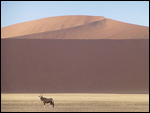
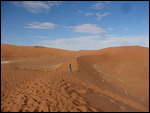
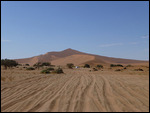
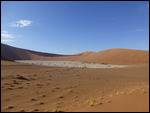
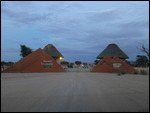








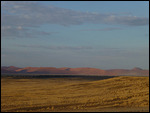

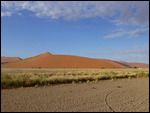
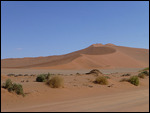
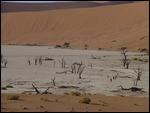
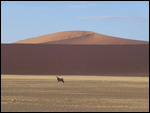
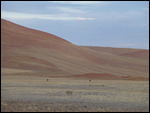


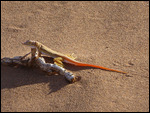
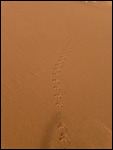
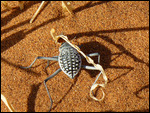
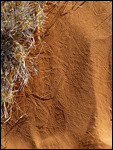
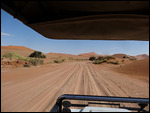
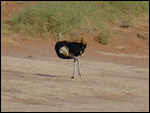
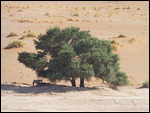
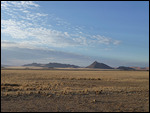
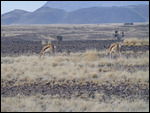
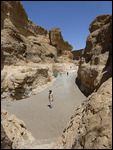
Ramesh
2013-03-25
First the Sahara, then the Kalahari. And now the Namib. You are now a blue blooded Bedouin !!!
Onwards to South Africa .....